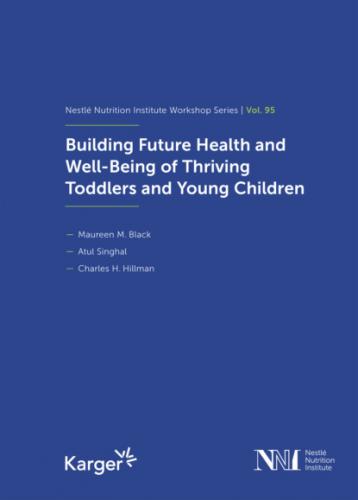In addition to nutrient intakes, detailed food consumption surveys can be analyzed to gain insights into dietary patterns, including amounts consumed from different food groups [24], food sources of energy and nutrients [14, 15, 18], or patterns of consumption, such as milk [17, 25] and beverage consumption [26, 27]. For example, we have been able to demonstrate the important role that fortified milk plays in the diet of young children in the Philippines [25] and have modeled the impact of fortified milk in reaching dairy recommendations in China [28]. These types of analyses provide insights into why certain nutrients may be below (or above) recommended levels and help to better understand the impact of potential changes to dietary habits for children in different countries of the world.
Conclusions
Several important sources of data on nutrition status and dietary intakes are available globally. International monitoring from the WHO, UNICEF, and the World Bank provides information on growth rates (stunting, wasting, underweight, overweight, and obesity) in children under the age of 5 years, and identifies countries where young children are at risk for deficiencies in vitamin A, iron, zinc, and iodine. The WHO has also created simple qualitative diet quality indicators that can be assessed using DHS and MICS surveys to help understand the risk for inadequate dietary intakes. These indicators are used as a basis for policy decisions and program interventions but are not designed to provide quantitative intake data on energy or nutrients. For quantitative data, national-level detailed dietary intake studies are required to complement global monitoring of nutritional issues by the WHO and the World Bank.
Table 2. Dietary fiber and micronutrient inadequacies (mean values per day and percentages below estimated average requirements [EAR]) in young children from selected countries
National surveys provide population estimates of energy and nutrient intakes. By comparing with reference values, they can be used to identify the percentage of children and other population groups at risk for inadequate or excess intake. While many high-quality national surveys exist, there is still a gap in knowledge. For example, not all countries conduct quantitative national-level dietary intake studies. In those that do, not all studies include young children. Although food composition databases are constantly improving, there are discussions regarding the harmonization of nutrient reference standards [29] underway, and the European Food Safety Authority (EFSA) has put in place a common framework for conducting dietary intake surveys across Europe, called the EU MENU project [30]. However, there are still marked differences in the quality of food composition databases and methods used to conduct and analyze comprehensive national nutrition surveys around the world. Improving the quality of food composition data, harmonizing nutrient reference standards, and using more consistent methodology will all help to improve our understanding of nutrient intakes and dietary patterns. High-quality dietary intake information for young children is still needed to help identify the foods and beverages most relevant to alleviate nutrient gaps and improve dietary intakes of toddlers and young children.
Using the data we have, we can see that child growth issues like stunting still affect approximately one-third of children <5 years of age in Southern Asia, Central and Eastern Africa, and parts of Oceania, while overweight is rising in all regions of the world. Rates of anemia, vitamin A, and zinc deficiency are also highest in South Asia and Central African countries. The DHS and MICS show that fewer than 15% of children 12–23 months old in Central African countries and less than 30% in South Asian countries reach the minimum acceptable diet score.
A deeper dive into the nutrient intakes from quantitative national nutrition surveys shows wide ranges in nutrient intakes for 2- to 3-year-old toddlers from Brazil, China, Indonesia, the Philippines, the USA, Mexico, Germany, and Russia. We saw generally low fiber and vitamin D intakes in the countries presented here, and wide variability in the percentage of young children with low intakes for vitamins A, C, and E, and for calcium, iron, and zinc. Understanding dietary patterns can provide additional insight into the food-related causes of these inadequate intakes and help to define appropriate targets for improving nutrient intakes.
Conflict of Interest Statement
The authors, Alison L. Eldridge and Elizabeth A. Offord, are employees of Nestlé Research, Vers-chez-les-Blanc, Lausanne, Switzerland (Société des Produits Nestlé S.A.). Nestlé Research funded FITS in the USA, analysis of the MING study in China, and analysis of national nutrition survey data for Mexico, the Philippines, and Russia.
References
1World Health Organization: Malnutrition. 16 Feb 2018. https://www.who.int/news-room/fact-sheets/detail/malnutrition (accessed Feb 2, 2020).
2Ritchie H, Roser M: Our World in Data (https://ourworldindata.org/). Micronutrient Deficiency 2020 (https://ourworldindata.org/micronutrient-deficiency). Obesity 2020 (https://ourworldin-data.org/obesity). Share of Children Who Are Stunted, 2016 (https://ourworldindata.org/grapher/child-stunting-ihme) (accessed Feb 3, 2020).
3Huybrechts I, Aglago EK, Mullee A, et al: Global comparison of national individual food consumption surveys as a basis for health research and integration in national health surveillance programmes. Proc Nutr Soc 2017;76:549–567.
4Rippin HL, Hutchinson J, Jewell J, et al: Child and adolescent nutrient intakes from current national dietary surveys of European populations. Nutr Res Rev 2018;32:38–69.
5United Nations Children’s Fund (UNICEF), World Health Organization, the
